In Porto, the dragons usually roar so loud, you can hear them throughout the entirety of Portugal.
FC Porto have been one of the most successful teams in the country, having gained the most points out of all Portuguese teams in the top flight and won the second most championships in Liga Portugal throughout its history.
The club’s most prosperous time in history has to be the early 2000s when they won six out of seven possible championships between 2003 and 2009 and crowned themselves kings of Europe by winning the UEFA Champions League under José Mourinho in 2004.
This summer, the club was shaken up quite a bit.
For the last seven years, from 2017 to 2024, former Porto player Sérgio Conceição led the club but decided to step down in June.
After three league championships, four cup wins, one league cup win, and three Super Cup wins, the club was heading towards the future with new ideas of a new manager.
However, the club did not necessarily want to end things with its manager, so new club president André Villas-Boas decided to make longtime assistant coach Vítor Bruno the new head coach.
Bruno was an assistant of Sérgio Conceição since 2012 and now is supposed to mould the team back into a perennial title contender and challenge Rubén Amorim and Sporting Lisbon for the title sooner rather than later.
In this tactical analysis and team-focused scout report, we will
analyzeVítor Bruno’s tactics he uses with his midfielders to dominate games again and make a run at the title in Liga Portugal for the first time in three years.
Dropping Back The Traditional Way
What’s really interesting about Porto’s play so far this season is that they are using their midfielders to progress the ball while not necessarily playing through them while building up or transitioning their attacks.
Under Vítor Bruno’s coaching style, he uses his midfielders in a variety of ways to overcome opposing teams‘ press, which is how Porto has managed to suffocate opposing teams thus far.
The first way Bruno has his midfielders move is through a traditional drop-back.
While the team usually lines up in a 4-2-3-1 or 4-3-3 formation, it changes shape in the build-up.
Both centre-backs stay inside and inside their own third, while both fullbacks push up the field and provide some width.
The attacking midfielder and the wingers are pushing forward in a very narrow shape and the two remaining midfielders are tasked with helping out the centre-backs.
The centre-backs are deciding what type of build-up Porto are going to use by their positioning.
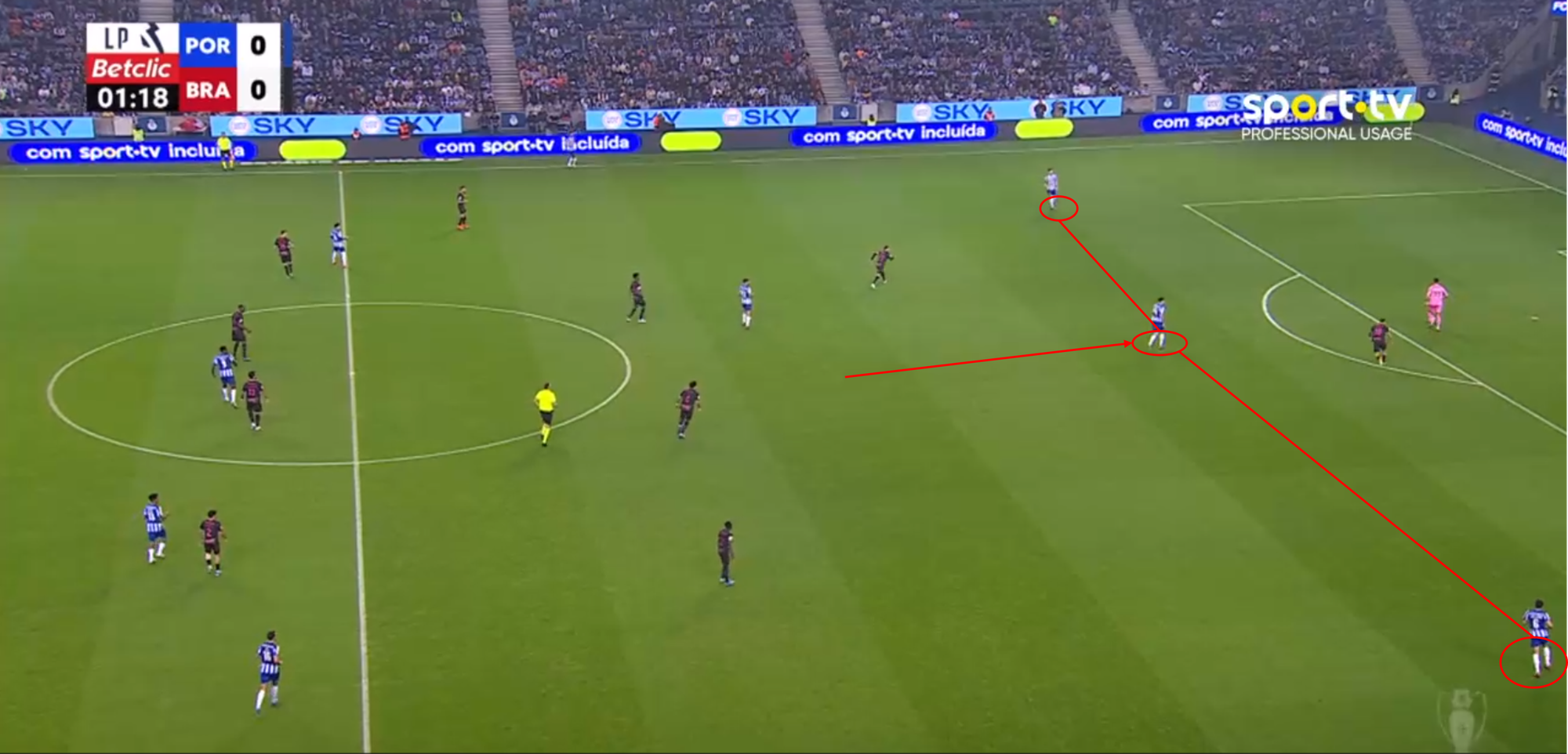
Here, we can see Porto shaping up in the build-up, with Diogo Costa playing as an additional outfield player at that stage.
Both centre-backs are positioning themselves out wide, which means that Porto are going to use the traditional drop-back in this situation.
While one midfielder stays put, the other midfielder moves back towards the centre-backs and the goalkeeper, forming a situational back-three.
This allows Porto to have a numbers advantage in the first line of play.
With just one Braga attacker pressing in the first stage, they are now forcing another Braga player to step up out of their 4-4-1-1 shape, and they still won’t be able to get any pressure onto the ball here.
While Porto are a top team in the Portuguese league and have great technical players in their squad, Bruno’s team still struggle with creating against a deep block, which is why they are attracting the press deep in their own territory to create space behind the opposing defensive line.
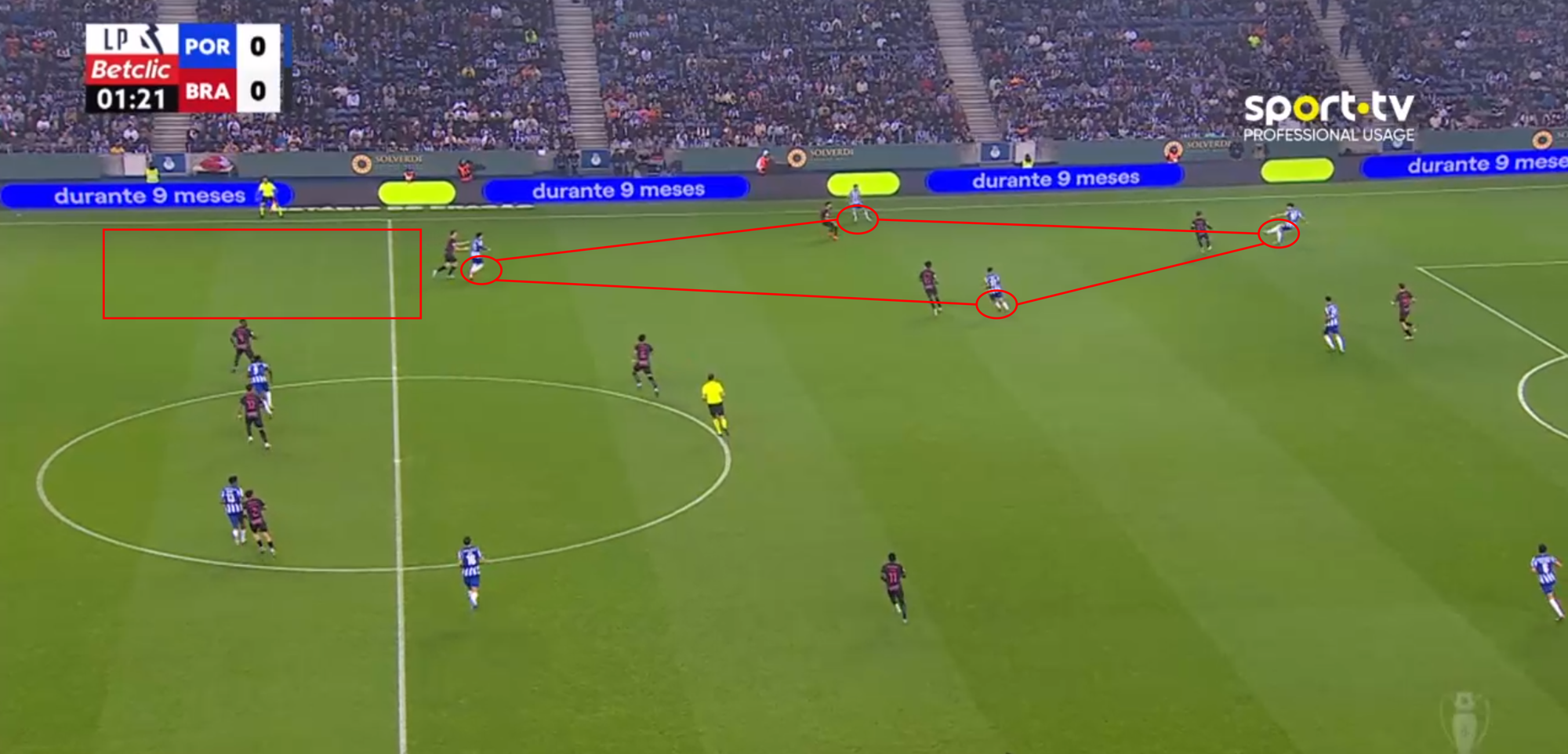
In the next step, Braga are forced to step up to regain control of the situation after freeing up a man with their numbers advantage.
But because they were dragged out of position, one of their two central midfielders and their left-back are now forced to step up and leave space behind them.
While Braga is able to cover the depth in midfield, they are not able to cover the space behind their left-back, which Porto now wants to exploit.
Porto forms a diamond, opening up a passing lane from the centre-back toward the right winger.
From there on, the two outside players in the diamond can move forward and receive the lay-off to attack the vacant space.
Here, Pepê plays the lay-off right to right-back Márío, who now can make a run with the ball at his feet towards goal behind the defensive line.
By just moving one midfielder back into the centre of the defensive line, Bruno style of play was able to create a numbers advantage in the build-up to beat the first line of press and attract Braga so they’d lose their defensive shape and compactness, which his players could then easily exploit.
Dropping Back Diametrically
While dropping your midfielder back into the centre of the newly formed back three is somewhat effective, most coaches and players in modern football prefer this tactical measure in a slightly different way.
The second way of dropping back is to drop back diametrically, which means the midfielder does not drop between the two central defenders in the build-up but rather moves out of the centre of the pitch and to one side.
The player who most famously loved dropping back this way was Toni Kroos when he was at Real Madrid.
Kroos was constantly moving to the left side of the Real defenders to get away from the crowded centre of the field and be able to turn his body towards the field when he received the ball.
Porto uses this especially after kick-offs when both their centre-backs are in their own box, but occasionally, they also use it as a variation of build-up in the games.
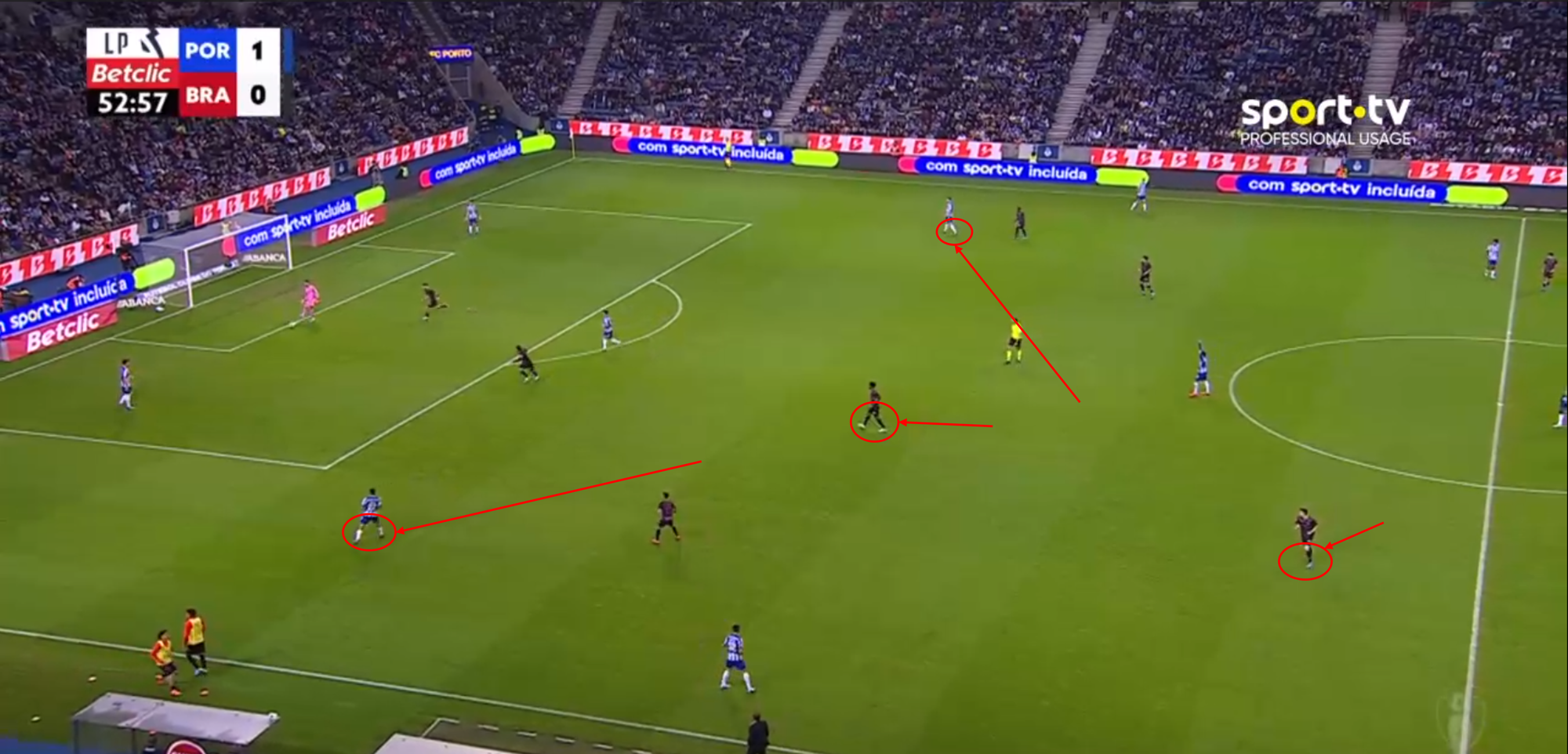
Here, we can see a kick-off for Porto against Braga.
Left centre-back Zé Pedro plays the ball to Diogo Costa, who then looks to find his right centre-back Pérez with a short pass.
Both Porto central midfielders are dropping back diametrically, with Varela moving to the right side, where the ball is going to be played, and González drops back to the left side of the field.
This does two things for Bruno’s men.
One, they are now getting a numbers advantage in build-up here, which gives the centre-backs easy passing options and allows the midfielders to receive the ball in at least a half-open stance away from any pressure.
Two, Braga obviously still tries to stay in control, and both of their midfielders are stepping up in this situation, which opens up space for Porto to exploit.
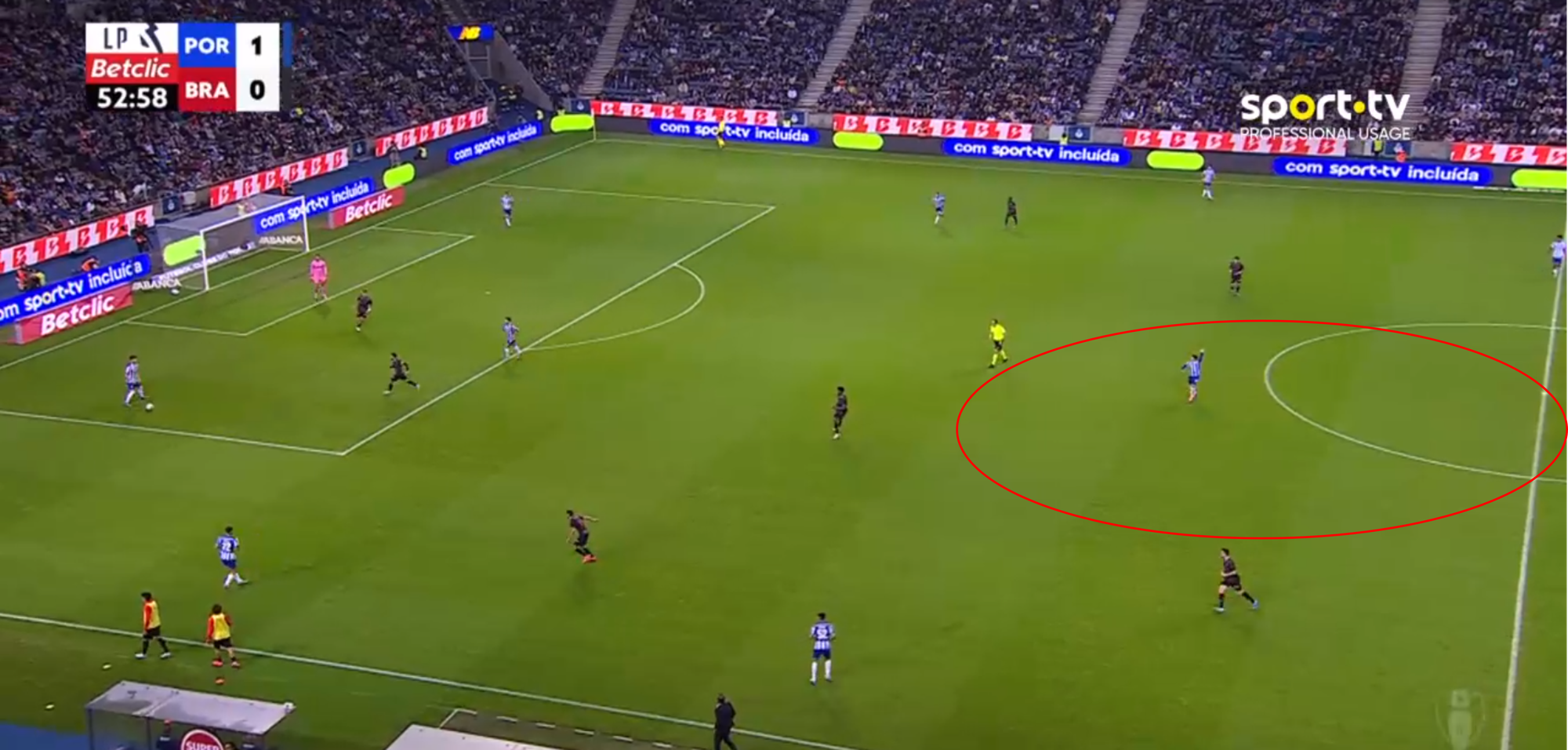
Here, we can see that Porto have now opened up the entire centre of the pitch by moving their midfielders to the outside.
While FC Porto are a top team and have a lot of possession, Vítor Bruno does not necessarily favour a build-up consisting only of low, short passes.
Porto have been a team that play a lot of long balls towards their strikers up front this season.
This type of positional play allows the centre-back to chip the balls towards the attacking midfielder in acres of space between the lines.
Porto love to find depth with their first or second pass, and these long passes are a perfect example of that.
By dropping their midfielders back diametrically, they force opposing teams into tough decisions: are we opening up the centre and trying to press forward? Or are we prioritising the middle of the field and don’t get any pressure on the back-line?
Under Vítor Bruno’s manager style, his backline is very adept at using these short moments of indecisiveness and punishing opposing teams regardless.
Shadowing Movements
While having a numbers advantage is pretty neat in football, Porto still needs to progress the ball somehow.
While they are not afraid to play with long balls, they are also using multiple methods to progress the ball.
Bruno has given his men multiple solutions in these situations, too.
We have already seen them creating a diamond on the wing and progressing the ball there, but playing through the wings is always something that coaches don’t really love because it increases the distance towards the goal immensely.
Porto are using their two central midfielders to progress the ball as well, but they are not doing that in a traditional way.
Porto is actively looking to get behind opponents, find solutions that break the opposing team’s line, and allow the players to turn towards the goal immediately.
Bruno’s first tactical measure for his midfielders is for them to shadow the movements of their teammates.
Usually, when we are talking about shadows in football, we are talking about coverage situations.
We are pretending the ball is the sun, and every single player, therefore, has a shadow behind him.
This means that he prevents the ball from being played there, even by not being there but by cutting off the lane.
We are not using this definition of shadows to describe shadow movements but instead looking at how a shadow moves: precisely like its owner, just a bit of a distance behind.
Some teams, like Olympique Marseille under Roberto de Zerbi, are using this to break the press by actively moving at the edge of the „coverage shadows “ during the press, but Vítor Bruno has his team working these things a little bit differently.
Instead of moving based on the opposing team’s players, they move based on the movements of their teammates, especially the two remaining midfielders after drop-backs, who are using this for Bruno.
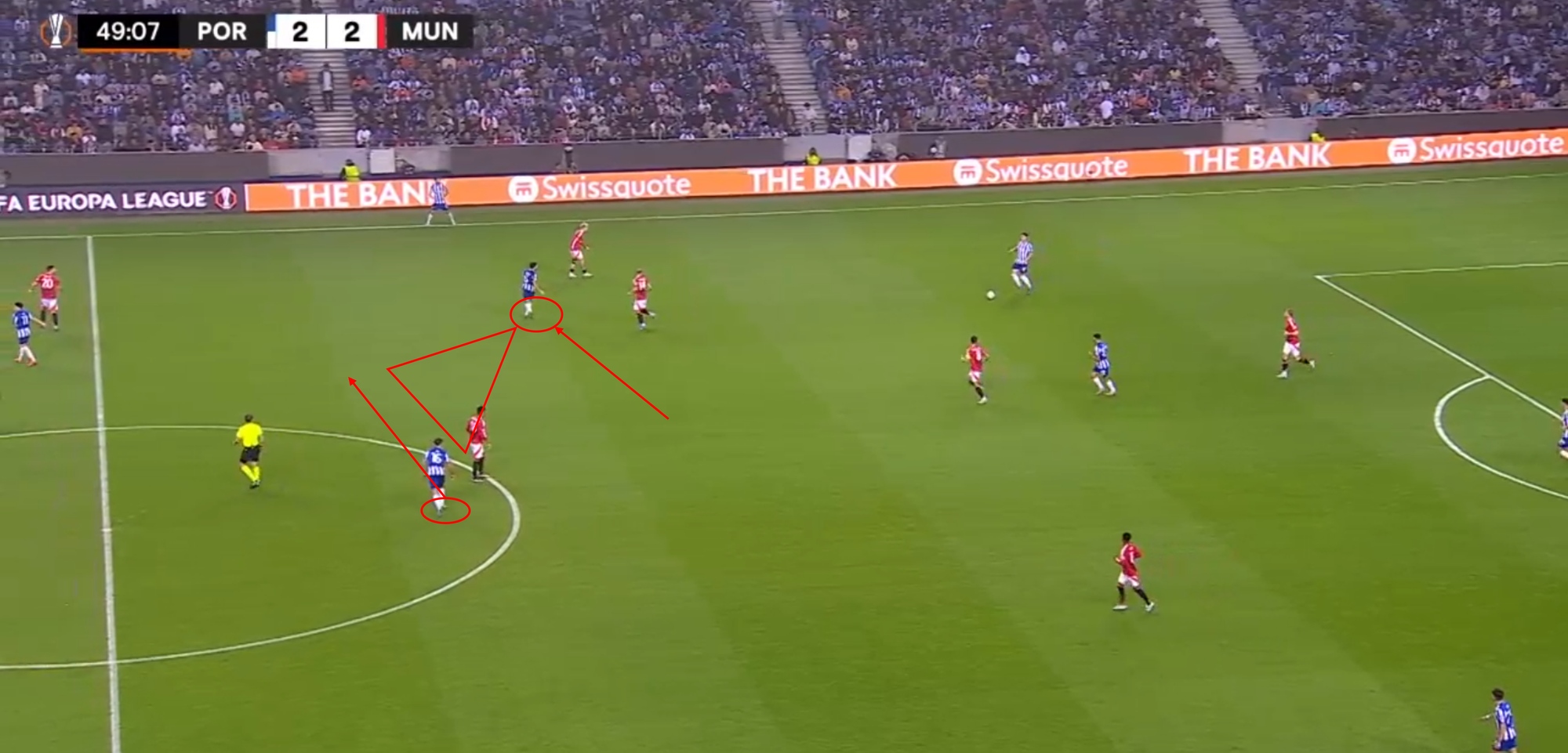
Here, we can see Porto building up their play in the UEFA Europa League game against Manchester United.
Once again, they dropped one of their midfielders back into the defensive line and moved their full-backs further up the field.
Now, the near-sided midfielder is moving towards the right side, dragging the pressing United midfielder with him.
With just a little delay, the other midfielder mimicked the movement of his teammate, just two metres deeper than his teammate did, like he was his shadow.
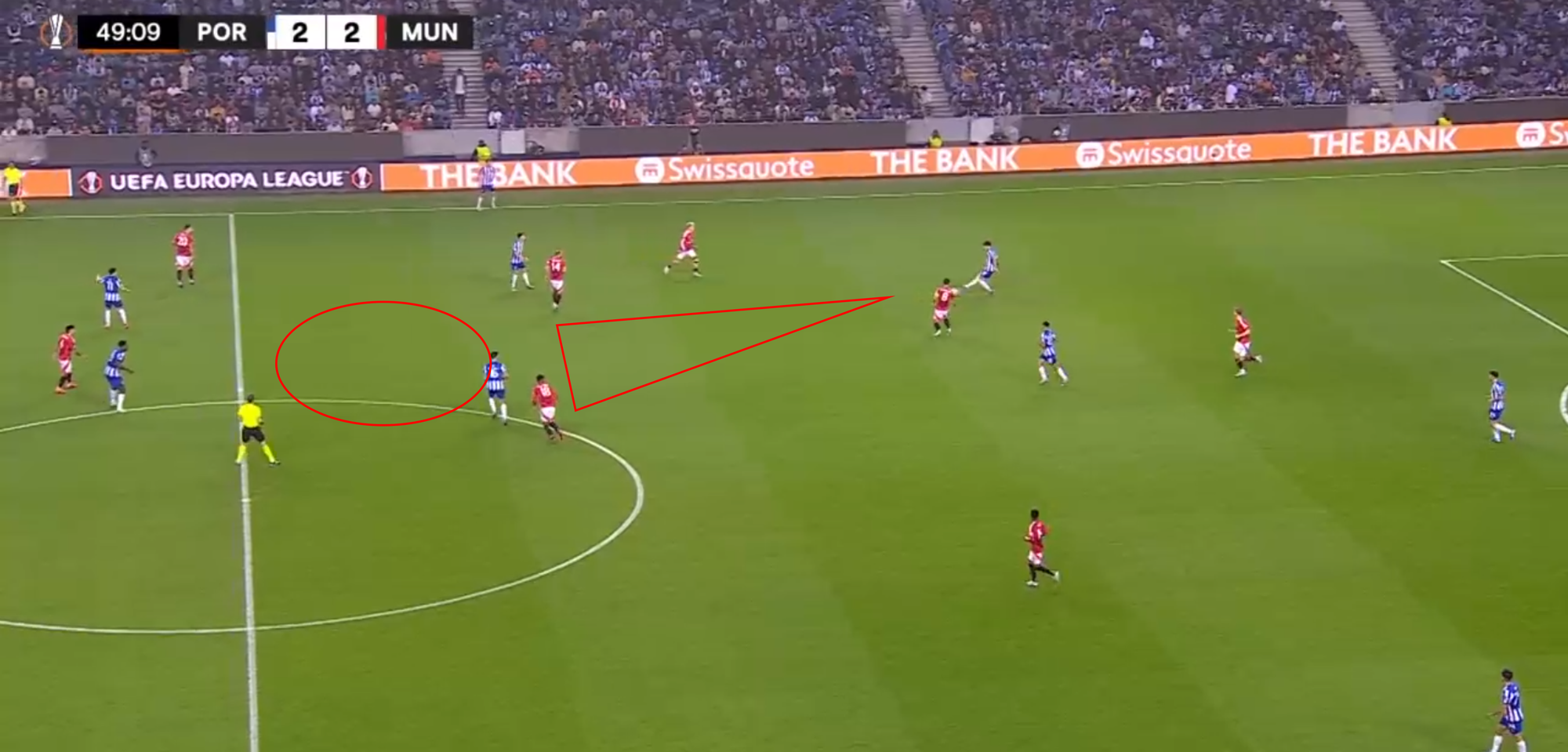
Here, we can see the result of the play.
Eriksen gets dragged out of his position and opens up a passing lane to the centre of the field.
Porto instantly exploits this space when the centre-back plays a sharp pass through the first line of press and finds a midfielder between the lines.
With these types of movements, Porto can always create lanes for line-breaking passes and get in behind the pressing defenders, allowing them to find depth instantly, even without a long ball.
With these movements, Bruno is able to scheme his players open and pull apart the opposing team’s shape.
This tactical measure is handy against the man-oriented press, but Porto used it well against every opponent they have faced so far.
Contrarotating Movements
We have seen players make the same type of movement to create space, but the more common way of using midfielders is to let them move in different, contrarotating directions.
This clears out space and forces defenders into decisions and communication within split-seconds, creating space and leverage for the attacking team.
With Porto having one midfielder pretty much always dropping back into the defensive line, the other player can use this momentum to move further up the field.
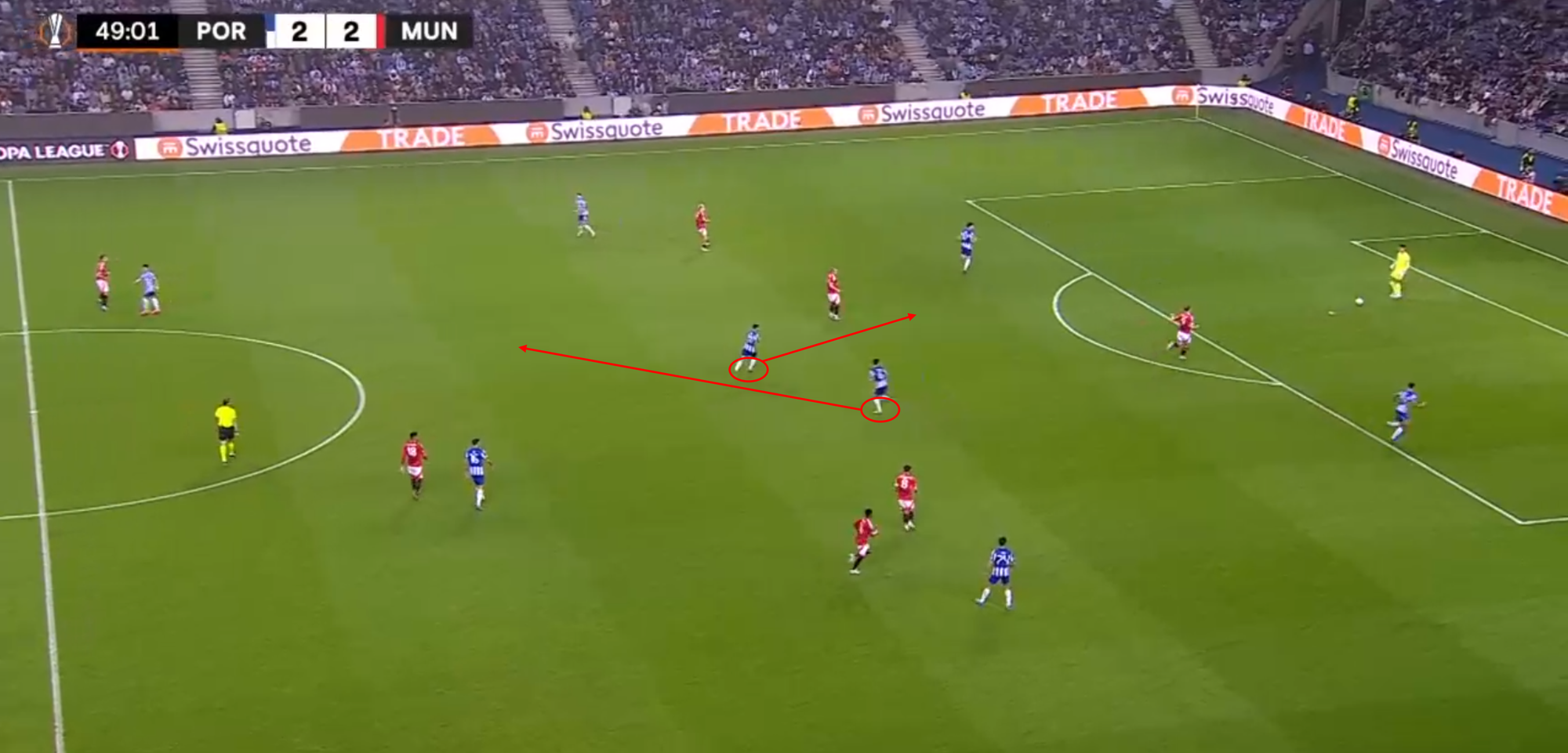
If we look at the same situation and how United even managed to end up in this dire situation for them, it started about ten seconds earlier.
Once again, Porto was playing with their goalkeeper, Costa, in the build-up, and the two centre-backs were moving out wide.
As we learned earlier, Porto now drops one midfielder into the defensive line, this time again in the centre of the newly created back three.
United only played with one striker, so now the midfielders and wingers are forced to step up to maintain the attacking press.
Otherwise, Porto would just have the numbers advantage again and could quickly free up one player in their backline.
The other backline occupant, Eustaquio, is moving in the exact opposite direction from his midfield partner now, which means he is pushing up the field to where Varela was coming from.
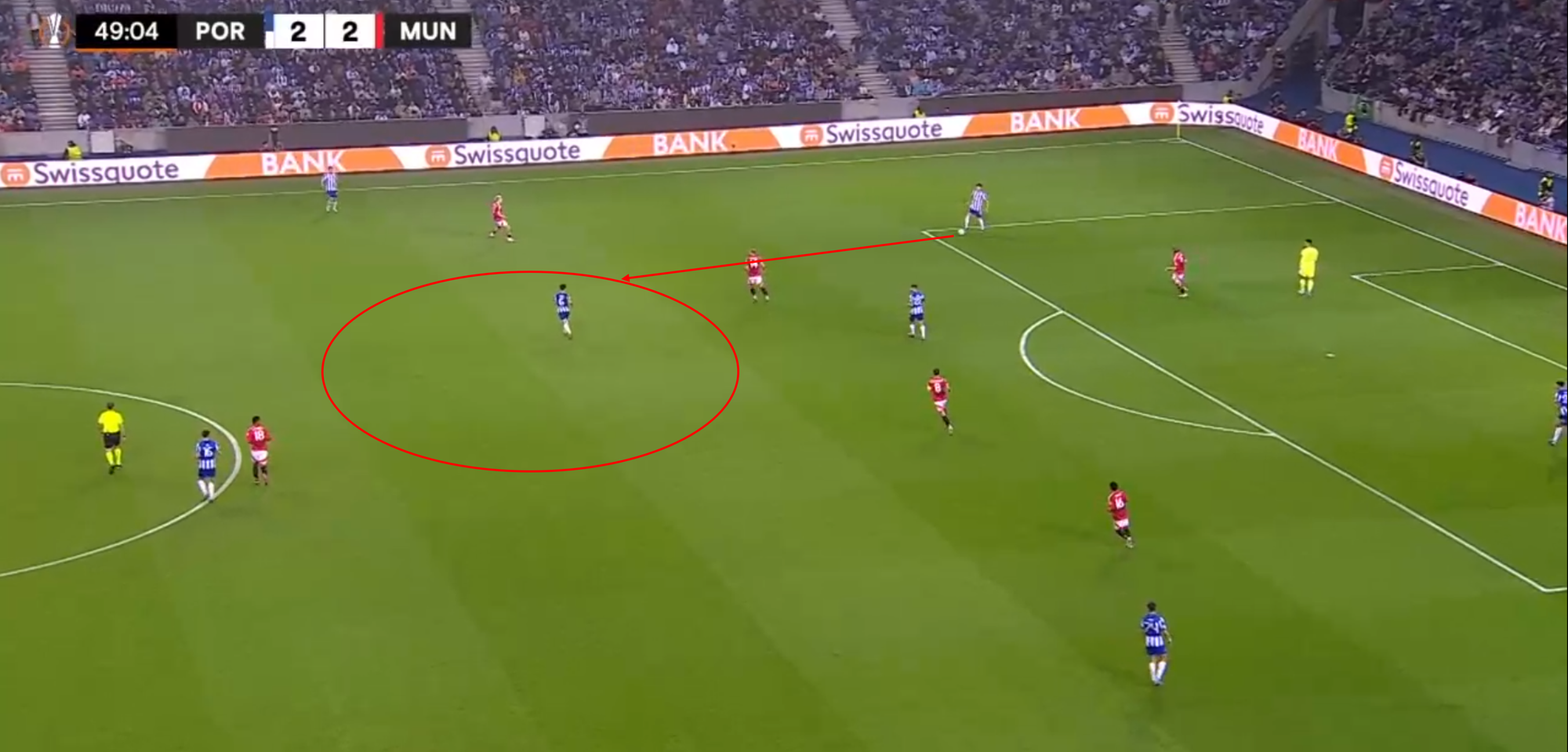
Manchester United and Erik ten Hag have struggled quite a bit this season.
This situation just showcases that their patterns of play, especially in their attacking press, are not executed the way the manager wants them to be.
Both central midfielders are entirely losing track of Eustaquio in this situation, which releases the midfielder into acres of space behind the line of press and opens up an easy passing lane as well.
Porto obviously stayed patient and punished United even harder by waiting until Eriksen was also dragged out of the centre, as we saw in the last paragraph.
This allowed Porto to attack the defensive line quickly and, in the end, score an easy goal to grab the lead after being down 0-2 to start the game.
With these variations in movements, it’s really hard for opposing teams and players to know what to expect when FC Porto are building up their play.
Vítor Bruno’s tactics have given his team multiple easy-to-execute solutions to get his players into favourable positions.
They always have multiple advantages they can use to progress the ball and punish the opposing teams.
Conclusion
After a surprising change in the head coach position, FC Porto have still managed to start well into the season.
They head into the second international break in second place in Liga Portugal and have also won the Portuguese Super Cup to start the season.
While the team struggled in the build-up last season and, therefore, dropped points in games where you would not have expected it, Vítor Bruno has managed to make a couple of tweaks in his tactics while still maintaining the strengths that made FC Porto a top team over the last couple of years.
The way he uses his midfielders is exciting.
While many coaches and teams focus on one way to use their players, Bruno and his team are using a wide variety of tactical measures with their three midfielders.
This makes it nearly impossible for the opposing teams to pressure their build-up and allows Porto to get into the positions they want on the pitch.
Can Porto contend for the title in Liga Portugal this season?
After beating heavily favoured Sporting in the Super Cup to start the season, expectations were high.
With seven wins in eight league games, Porto are the biggest threat to Amorim’s men.
However, their only loss came to Sporting, and they were heavily outmatched in that game.
Also, their international play has been somewhat disappointing so far, with a loss to a struggling Young Boys Bern and conceding a late game-tieing goal against a decimated United team.
Still, Vítor Bruno has his team on the up.
When their summer signings have settled in ultimately, and the team gets more comfortable, FC Porto should be in for a very successful season.

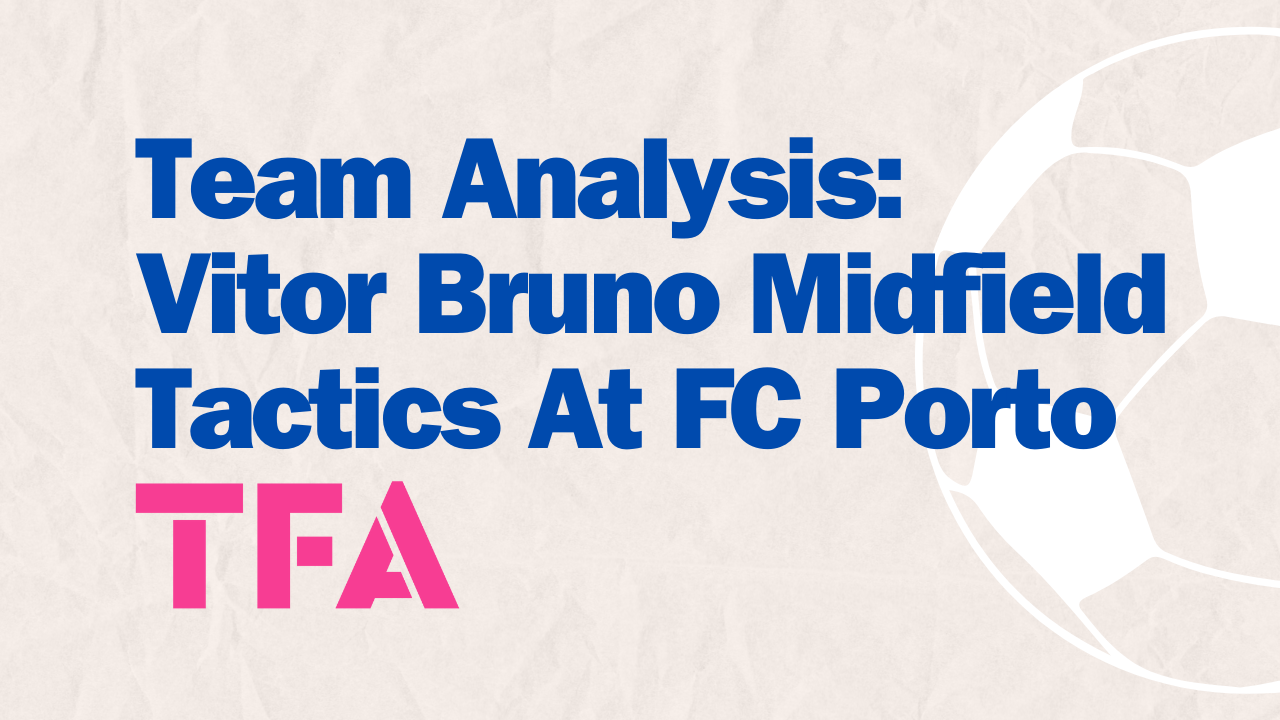




Comments